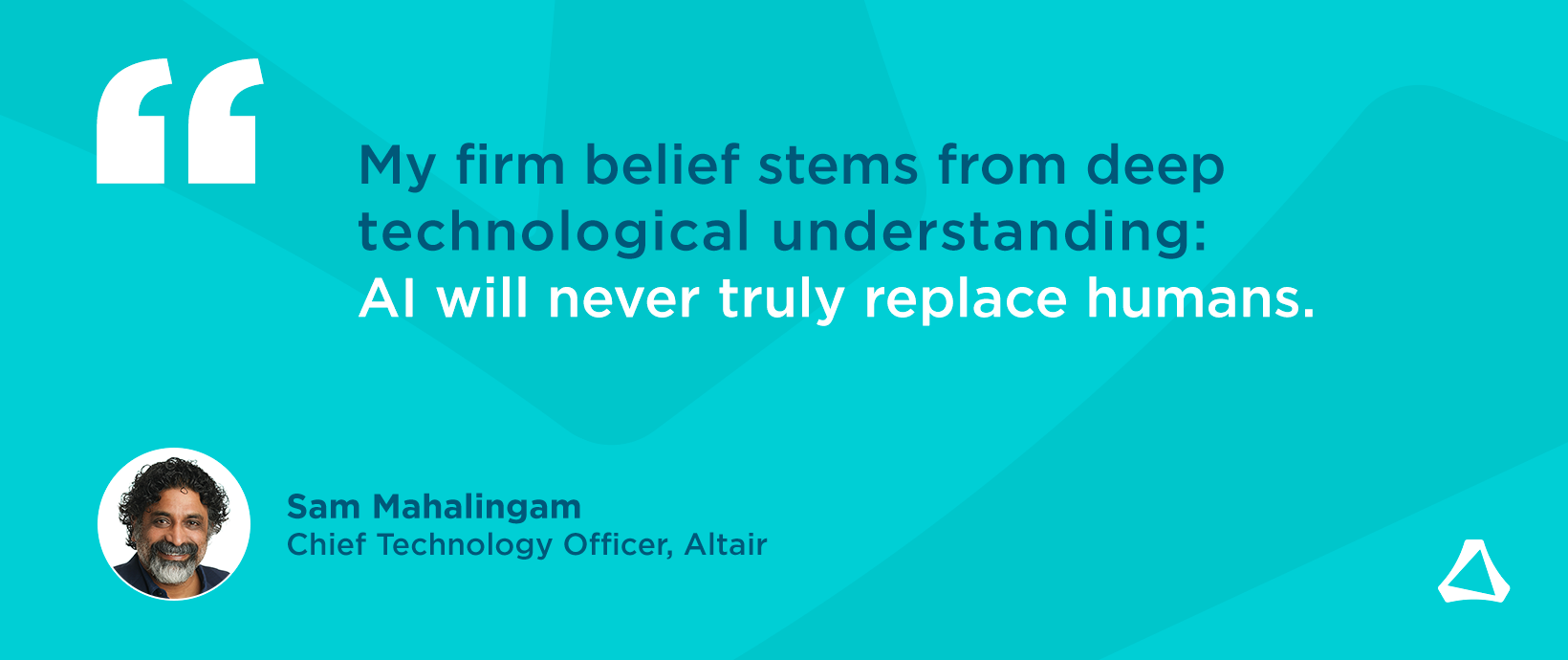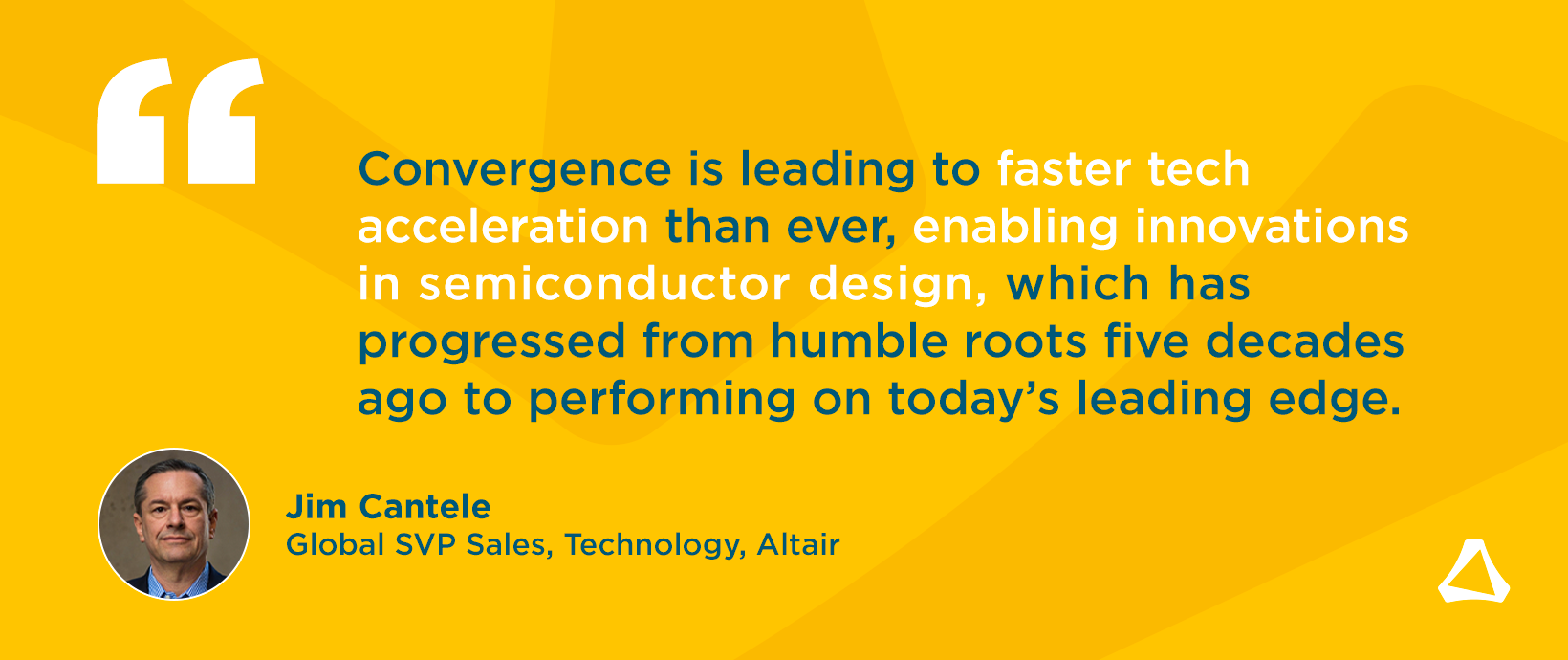The Sweet Sound of Simulation-driven Smart Speaker Design

In my last post, I outlined the value of applying a simulation-driven approach to smart product design. By employing a single model multi-attribute (SMMA) platform that incorporates highly automated workflows, it’s possible for design and engineering teams to cut lead times and reduce the need for physical prototyping.
Now we’ll take the example of a smart speaker to show how the theory translates into practice. In particular, the aim is to demonstrate how elegantly Altair OptiStruct™ brings together a wide array of physics. Speaker design is a problem with multiple attributes and multiple physics, where a product design engineer, mechanical engineer, system engineer, and electrical engineer, all need to be satisfied by individual physics attributes without compromising the sound quality validated by the sound engineer. This creates a truly collaborative ecosystem for product development.
I’ll be drawing on a recent webinar led by Ismail Benhayoun, our technical director. Using a typical smart speaker design, he walks us through a number of the structural and acoustic challenges that are central to maximizing perceived quality, an all-important but all-too-elusive metric in the consumer electronics domain. Specifically, Ismail explains how Altair’s platform can help to achieve sound pressure (quality) levels in line with targets, optimize speaker performance in different environments, and identify and address unwanted noise like mechanical, interface, sibilance, rumble, buzz, rub, squeak, and rattle.
Before diving a little deeper, I’ll take a quick detour to another webinar in the same series. Led by Ujwal Patnaik, our multi-physics business development manager, it demonstrates – and quantifies – the lead time benefits I mentioned at the outset. As Ujwal details, with a complex design matrix such as that posed by a smart speaker, the traditional approach to building a finite model for simulation will take around ten hours. Why? Because with conventional methods, each attribute involves a different GUI, different user, and hence different finite model for different solvers.
With Altair’s approach, you can cut that to just three hours: one to mesh, and two for the model set-up for analysis (in this case) of four attributes: thermal fluid-structure interaction (TFSI), non-linear static, structural vibration, and vibro-acoustics. Seeing our solution ‘live’ underlines how fast and intuitive it is to prepare the ground for Ismail’s subsequent work. In less than half a day, engineers have access to all the tools they need to run design reliability studies and trade off studies from cost and material to manufacturing methods and sound quality.
Usually, the issues addressed by Ismail are resolved through a number of physical tests. But that’s time consuming and expensive. In fact, in some cases, it’s simply not possible to replicate all the desired scenarios. What’s more, rectifying problems at this stage is, again, time consuming and expensive. Hence the compelling value of a simulation-driven philosophy.
Smart speakers are characterized by the array of different components inside the cabinet: printed circuit board (PCB), heat exchanger, and loudspeaker, for example. Ismail kicks off his design journey by considering the loads involved in speaker membrane excitation, demonstrating rapid and accurate electromagnetic (EM) simulation of the voice coil. All the relevant elements can be modelled, giving the user freedom to define the parametric model in line with their individual use case. A wide range of materials are embedded in the software as standard, but these can be customized too. Similarly, in terms of the sound curve the designer is looking for, the process can either be driven by a formula, or a specific load such as particular song or track.
The EM simulation enables the analyst to define the membrane and coil vibrations. Those are the loads that Ismail then used in the FE structural dynamics analysis.
With Altair’s platform, such loads are brought seamlessly into the whole system. The user can see clearly how they interact with different elements and attributes within it. Ismail, for example, performs vibration analysis on the PCB. What is the maximum acceleration it can withstand?
And that’s just one element of the design. Vibration levels can be tracked at any point in the assembly. So, in this project, measurements are also defined on the cabinet, heat exchanger and fan. Violated targets are identified and, critically, root cause analysis performed. Advanced post-processing workflows enable key contributing factors to be traced. Moreover, rather than having to rely on the conventional approach to resolving such problems (educated guessing!), Altair enables swift and sophisticated numerical optimization. This is demonstrated by determining the optimum connection strategy for the PCB. How many connections are needed? Where should they be positioned?
Then Ismail turns to acoustic effects. Again, that’s a straightforward step. We’re using the same finite element model, and the same membrane excitation results. But a microphone wall and acoustic cavity are added around the speaker to explore sound pressure levels for each individual microphone. What are the peaks and effects recorded? The scalability of Altair’s solution is also emphasized, showing how straightforward it is to move from one to two speakers, or build an entire room with multiple microphone walls.
Next up are the challenges of buzz, rub, squeak, and rattle. If you’re at all familiar with consumer electronics, you’ll appreciate just how important these are in terms of overall perceived quality. Dealing with unwanted noise that is generated by components’ interfaces is a key issue. One that is commonly tackled through physical testing in the later stages of development.
While still in the same finite element model, our webinar demonstrates how users can place virtual sensors between parts in the assembly and track the relative displacements between them. It’s a highly automated process, enabling complex products with hundreds of interfaces to be handled efficiently. Users can zoom in on individual parts to see the relative displacements between them, and Altair’s solution even takes into account tolerances.
Ismail takes a more granular look at the results from all these interfaces. The pattern is now becoming familiar, with a highly automated workflow supporting advanced root cause analysis and subsequent optimization. Unwanted noises can be considered in the acoustics simulation. Contact forces are extracted from the interfaces and, by circling back to the finite element model, speaker loads can be combined with rattle loads. Users can therefore compare a ‘perfect’ model (one without any rattle) with a ‘rattling’ version. Then they can investigate sound pressure levels at each microphone, enabling a detailed understanding of the scale and nature of the problem. It’s even possible to pick out the rattling sound (something that could never be done with a physical test) to assess just how severe it is, and the impact on perceived quality. This process can isolate the noise source and identify the root causes, things physical testing lacks due to practicality. You cannot miniaturize yourself and jump inside a speaker to see and hear what happens!
Want to hear the sound too? Not a problem. Plug it into the post-processing capabilities within Altair Compose™, create a wave file, and listen away.
Describing some of the core capabilities of our multi-physics, multi-attribute, multi-solver solution is one thing. What’s much harder to portray is the sheer speed and simplicity of the workflow. For that, you really do need to take a look at the webinar. And remember, this is still only one part of a much bigger (but seamlessly integrated) picture. In my next post, I’ll consider the electrostatic discharge (ESD) elements of our smart speaker project. Stay tuned.




